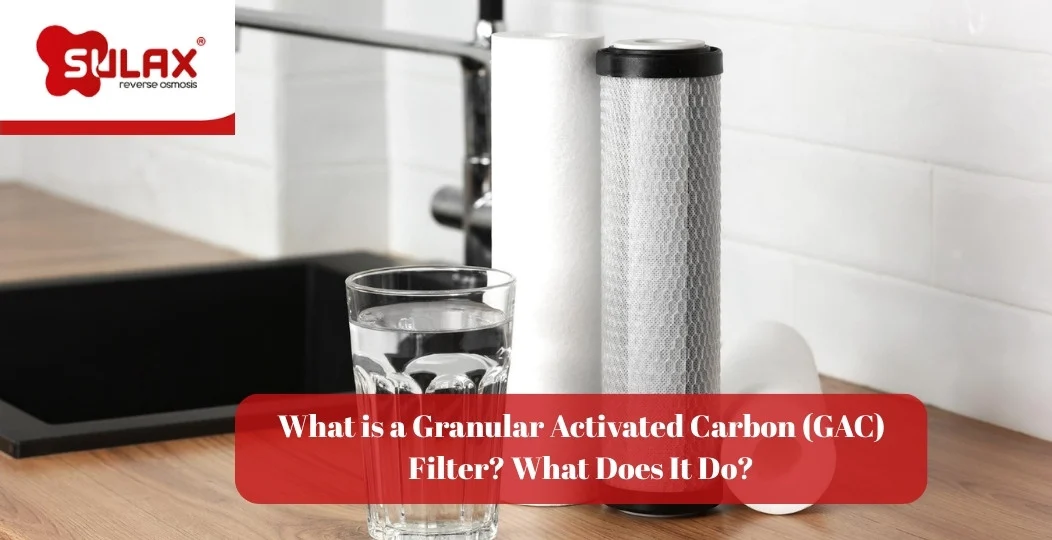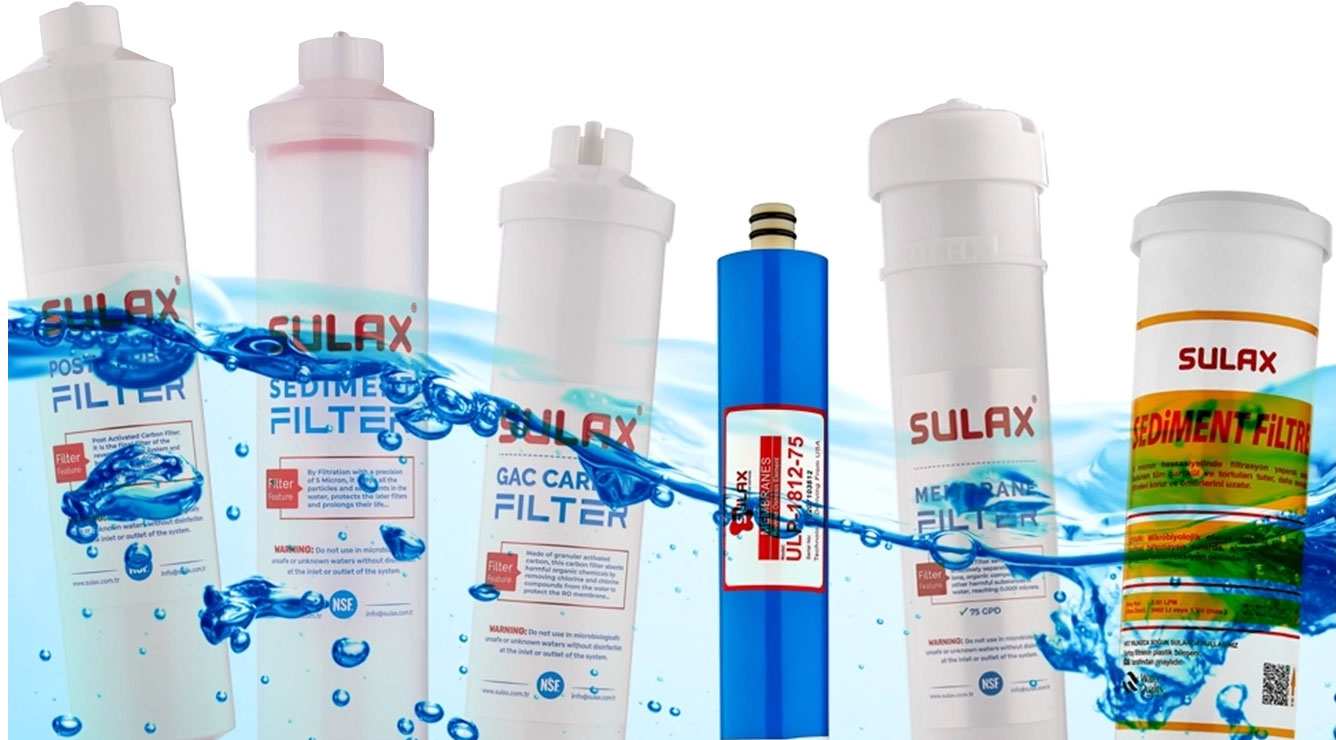
An activated carbon filter is a purification filter used in water treatment systems to remove contaminants, bad taste, and odors from water. The surface of the activated carbon filter consists of millions of tiny pores, making it an excellent adsorbent. This allows it to absorb chlorine, heavy metals, chemicals, pesticides, and organic substances present in water.
Activated carbon filters used in Sulax water purification systems improve drinking water quality and remove unpleasant tastes and odors, providing safe drinking water.
Activated carbon filters used in water and air purification can come in several forms:
However, activated carbon filters must be replaced periodically, or they may lose effectiveness. For detailed information, see our guide on water filter replacement.
Activated carbon filters used in water purification contain millions of microscopic pores. These pores expand the carbon surface, allowing it to hold billions of contaminants. Activated carbon is produced from organic materials like coal, coconut shells, or wood, processed at high temperatures.
The working principle is simple: contaminants are attracted to the carbon surface through adsorption and held there. Filters must be replaced after a certain period depending on usage. For more details, check our open-case activated carbon filter product.
The lifespan of an activated carbon filter depends on usage conditions, water quality, and filter type. On average, it lasts between 6 months and 1 year. High levels of contaminants may shorten this period. Follow the manufacturer’s recommendations for replacement timing.
Activated carbon filters are single-use. Once saturated, their contaminant-holding capacity decreases, reducing effectiveness. Therefore, they must be replaced after a certain period.
The lifespan depends on usage, contaminant levels, and filter type, generally between 6 months and 1 year. High contaminant levels can fill the pores faster, shortening the lifespan. Using a pre-filter can help extend the filter’s life.
Carbon filters remove chemical substances, bad odors, and organic contaminants through adsorption, improving taste and smell. Normal filters usually use mechanical filtration, removing physical particles like sand, rust, and sediment, but they are less effective against chemical and organic contaminants. Best results are achieved by combining mechanical and activated carbon filters.
Activated carbon filters are widely used in household and industrial water systems. They effectively remove harmful chemicals, chlorine, pesticides, bad odors, and some microorganisms, improving taste and drinking quality.
Activated carbon filters are not designed to be washed. Contaminants are adsorbed into the carbon pores, which eventually fill up. Washing cannot fully clean them and may damage the carbon structure, reducing performance.
Yes, activated carbon filters are highly effective in removing chlorine. Chlorine negatively affects water taste and odor. Activated carbon adsorbs chlorine, producing healthier and better-tasting drinking water.

Fill out the form and be the first to enjoy the benefits!